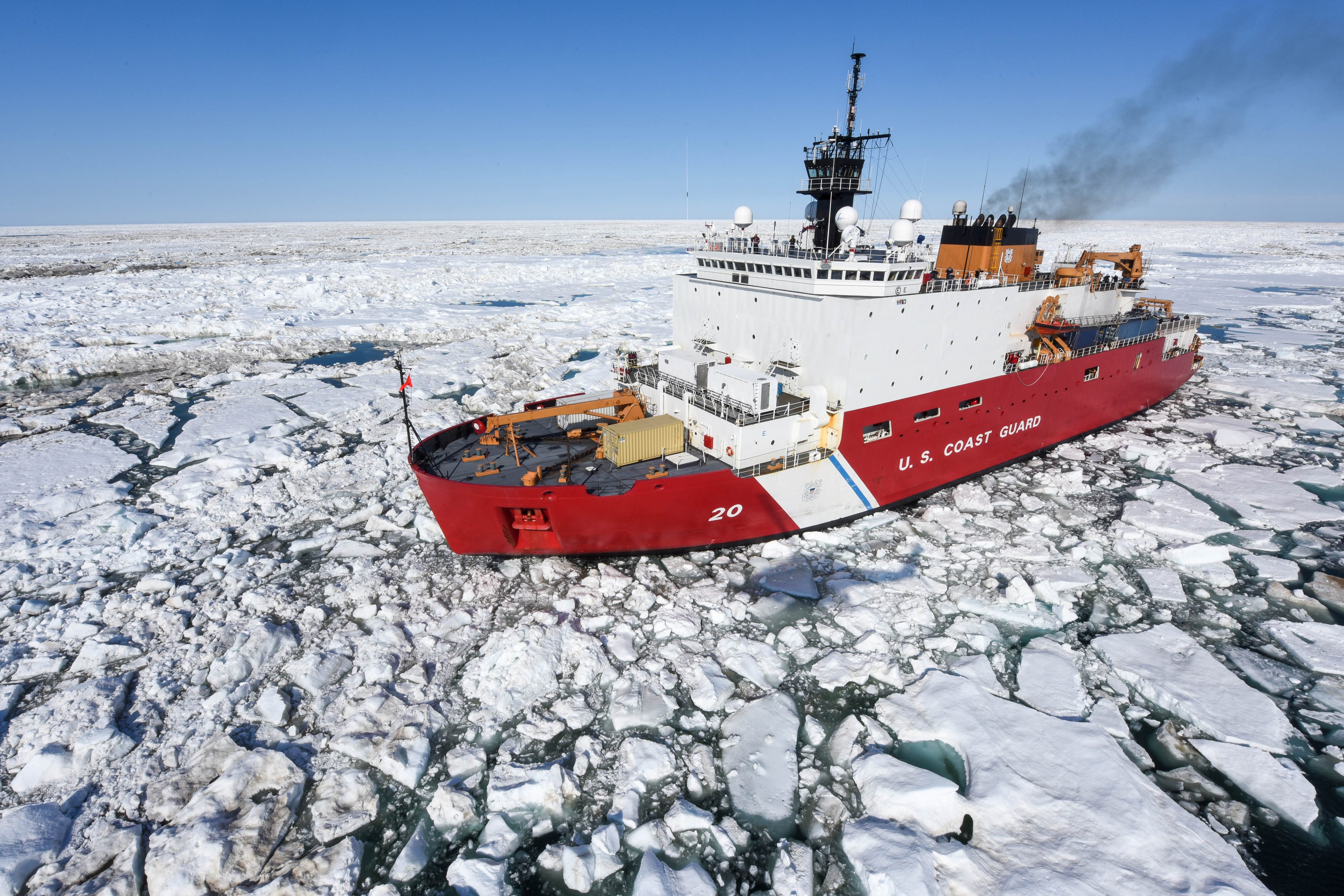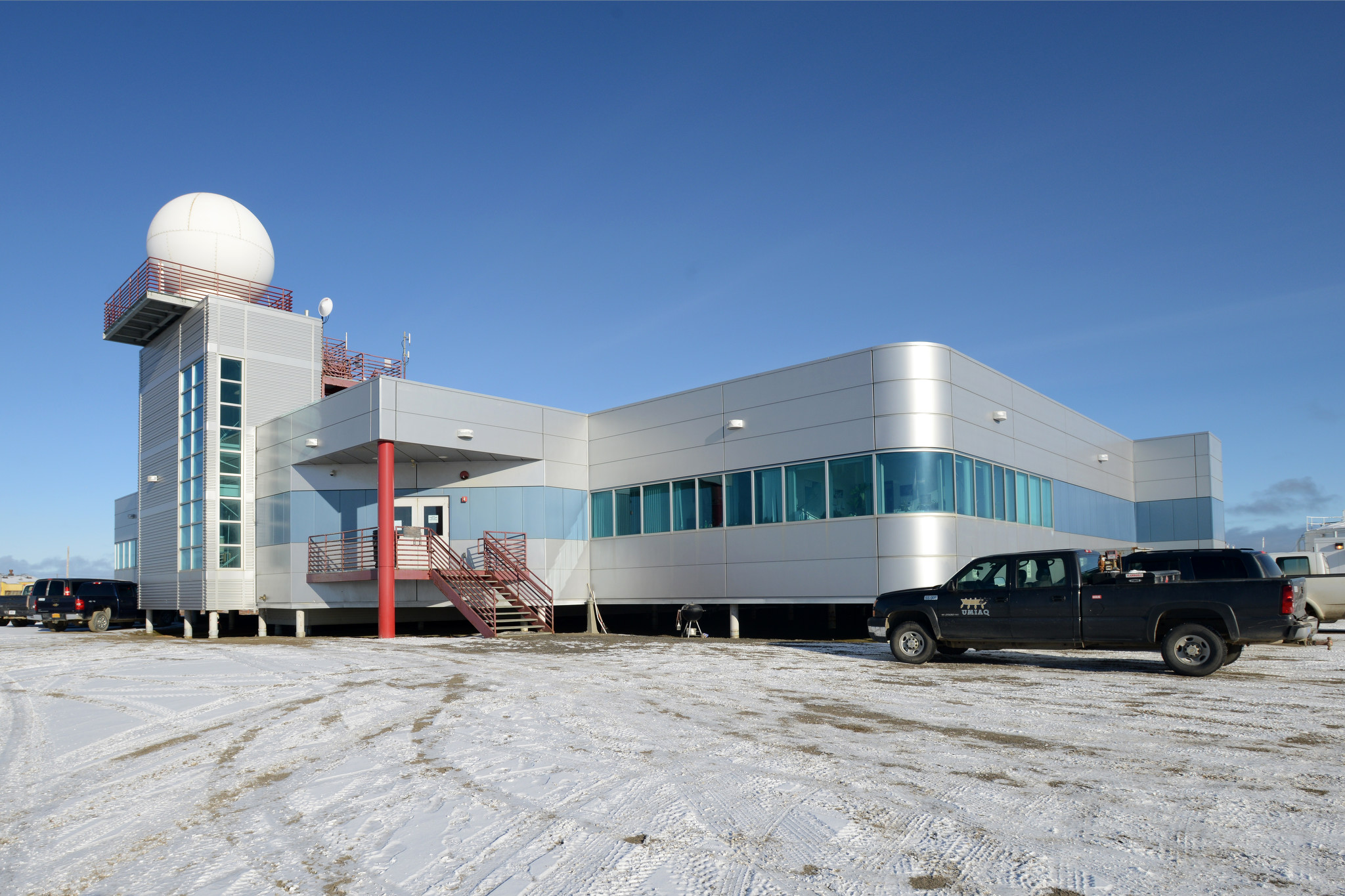The next 5 years of US Arctic Research: more locals, fewer Russians

Last week at the Fall Meeting of the American Geophysical Union – the world’s largest annual gathering of scientists – the U.S. Arctic Research Commission announced the release of its report on goals and objectives for Arctic research for the next two years. While it might seem odd that such a report would be released on the eve of a new administration, its production is mandated by law every two years.
USARC is an independent agency that advises the White House and Congress on Arctic research. Its report for 2017-2018 upholds six overarching goals: to better understand Arctic environmental change, improve Arctic human health, transform Arctic energy, advance Arctic infrastructure, explore Arctic cultures and community resilience, and enhance international scientific cooperation. These goals are more or less identical to those in all four of the previous plans released under the Obama administration.
Despite being separately listed, these six goals are deeply interrelated. For instance, climate change, human health, and infrastructure all affect one another. Warming temperatures alter the presence and distribution of bacteria and viruses that can harm both people and wildlife. As mammals from a hotter south move north in search of cooler temperatures, they can bring giardia, an intestinal infection, with them. And as permafrost thaws and sea level rises, sanitation systems can sink and fail and saltwater can intrude into freshwater sources.
USARC’s biannual report informs the more comprehensive five-year plan also released today by the Interagency Arctic Research Policy Committee (IARPC), which coordinates Arctic research between federal agencies, NGOs, and industry. It, too, advises the White House under the auspices of the National Science and Technology Council.
Northerners as agents of northern research
The two reports are moving in a direction where rather than just imposing Western-designed science on the Arctic and its people, projects are being designed from the tundra up, informed by northerners and their needs.
At the IARPC town hall at AGU where the reports were announced, the committee identified several emerging opportunities in Arctic research: resilience, co-production of knowledge between traditional ways of knowing and Western science, and STEM (science, technology, engineering, and math) education. The creation of these new opportunities is in large part thanks to the Arctic Council’s groundbreaking work in these areas, to which an IARPC panelist drew attention.
One panelist at the town hall emphasized that ideally in Arctic research, indigenous peoples are “not just stakeholders, but actually the agents in doing the research. They’re true partners in this effort – that’s the goal of co-production of knowledge.” IARPC is investigating opportunities where this type of joint research could be explored and also incorporated into mission agencies.
In terms of STEM education, involving young people in the Arctic with the science projects that are being carried out in their region is also increasingly recognized as important. The same panelist explained, “If there’s one thing that indigenous peoples have consistently said, it’s. ‘As you come into the Arctic and do research, we would like you to engage with our students and build educational partnerships – both in person and actually remotely.’”

The expansion of fiber optic cables into remote places like Utqiaġvik (formerly Barrow), Alaska and Inuvik, in Canada’s Northwest Territories, will enhance opportunities for online education and video conferencing. This will also help bring down costs for southern-based researchers, who won’t necessarily have to travel north on a constant basis to maintain an ongoing relationship.
One audience member from Ukpeaġvik Iñupiat Corporation, an Utqiaġvik-based regional corporation, praised the federal government’s new direction in Arctic research. He offered, “Thank you for shifting focus onto our well-being in the Arctic. I think it’s unprecedented.” However, he criticized the underrepresentation of native peoples in defining Arctic research goals.
Russia has fallen off the radar of U.S. Arctic collaborative research
As USARC and IARPC appear to move towards more locally engaged research, one major collaborator has gone by the wayside: Russia.
Comparing the 2017-2018 report to the first USARC report, released in 2003 under the Bush administration, reveals how much cooperation with the Arctic’s largest country has fallen off the agenda. The 2003 report mentioned Russia 34 times and encouraged, “The opportunities for cooperation and collaboration with Russia in the Arctic are extensive and hold great potential for advances in knowledge.” It also suggested at the time that the shrinkage in resources in Russia available for Arctic research due to the economic crisis of the 1990s presented an opportunity for the U.S. to “build cooperative relationships with Russian scientists in the Arctic.”
Yet the 2017-2018 report barely mentions Russia. Only one suggestion is made regarding enhancing bilateral U.S.-Russia cooperation in the Arctic: pushing the U.S./Russia Intergovernmental Consultative Committee to improve ecosystem research in the Bering and Chukchi seas, which lie between Russia and the U.S.
What’s next for Arctic research under Trump?
President-elect Trump’s friendly ties with Russian President Vladimir Putin could resuscitate U.S.-Russia partnerships in the Arctic, but likely more in the are of research into offshore extraction rather than onshore adaptation. Trump’s interests in Arctic policy, if he ever reveals any, will almost certainly lie in the realm of business opportunities rather than climate change and community resilience.
The disdain for science and basic research runs deep in Trump’s cadre.
One member of Trump’s transition team is also in favor of abolishing the White House’s Office of Science and Technology Policy (OST). This office oversees the National Science and Technology Council under which IARPC sits. On the homepage of its website, the OST states, “Climate change represents one of the greatest challenges of our time.”
The OST also organized President Obama’s historic trip to Alaska, whose priority was to draw all Americans’ attention to the threats posed by climate change.
The anti-OST member of Trump’s transition team, James Carafano, has blogged:
“The Obama White House has used the Office of Science and Technology principally to support its pet political causes—like advocacy for global climate change research that matches the president’s views on the topic and can be puffed to justify expanding federal regulations in virtually every aspect of American life.”
If OST were to be eliminated, the future of subsidiary bodies like USARC and IARPC could be in danger. Both were established by executive order under President Ronald Reagan in 1985. Executive orders are powerful tools of the presidency, but the risk is that they can be more easily undone than congressional acts.
For that reason, while the actual advisory councils may stand on tenuous ground, funding for Arctic research, which is provided through appropriation bills, is not in immediate danger. Undoubtedly, questions about the longer-term future of federal funding for science have been high on attendees’ minds at this year’s AGU. But a lot of scientists seem fairly confident — or maybe just outwardly hopeful — that at least for the next two years or so, not too much will change budget-wise.
Still, some town hall panelists were relieved not to have to address the toupéed elephant in the room. After the question and answer session ended without a word about Trump, Martin Jeffries, IARPC’s Executive Director, adjourned the meeting by saying, “I’d like to thank you for not asking me about transition.”
Mia Bennett is Ph.D. candidate in the UCLA Department of Geography and writes the Arctic policy blog Cryopolitics, where this piece first appeared.